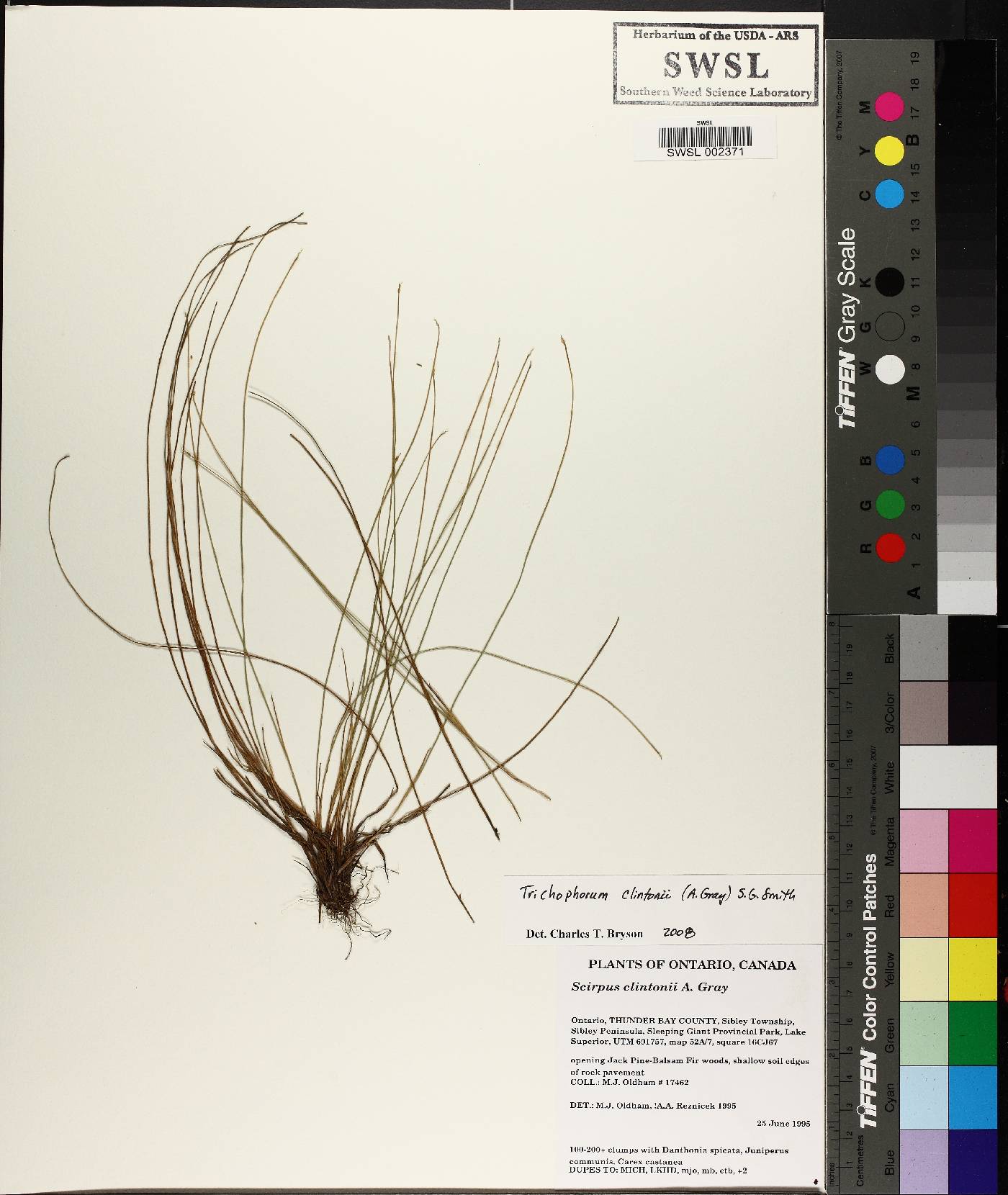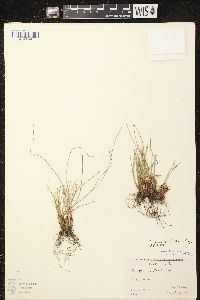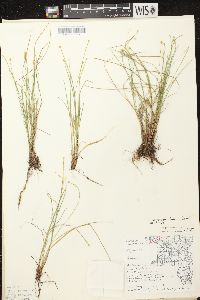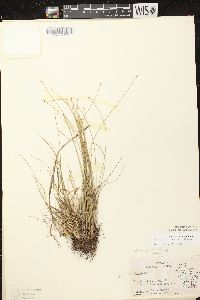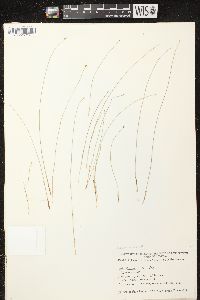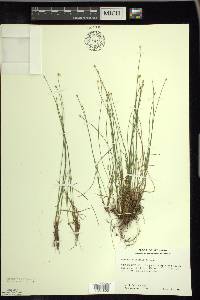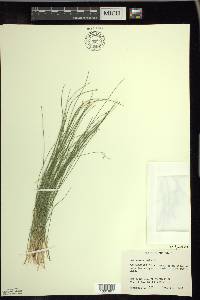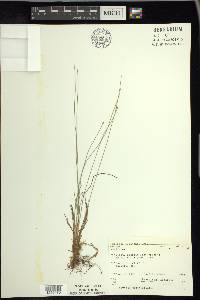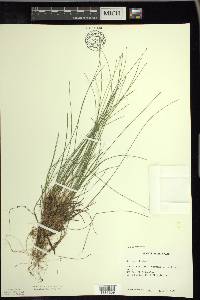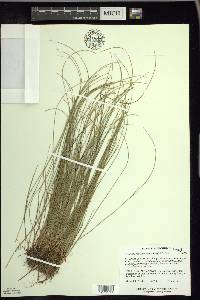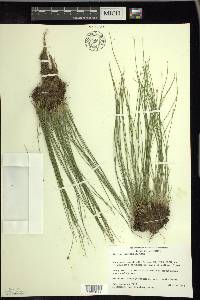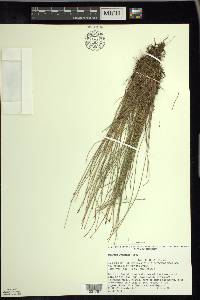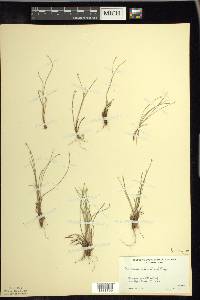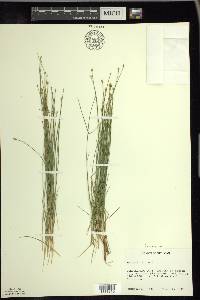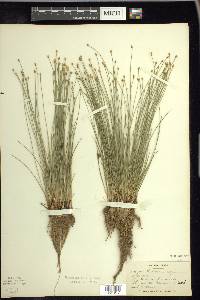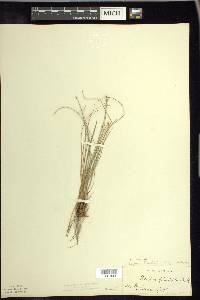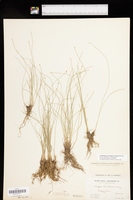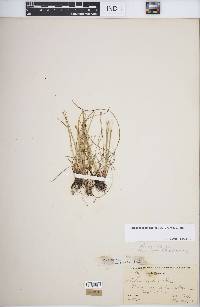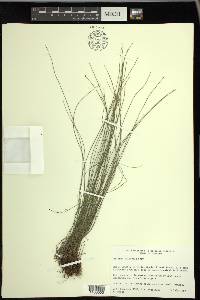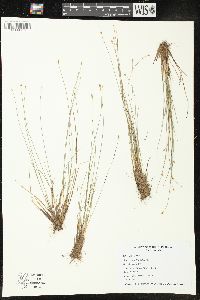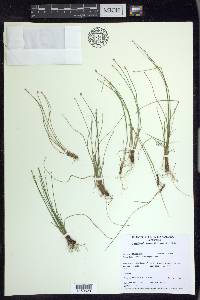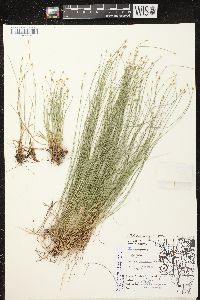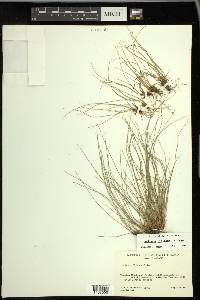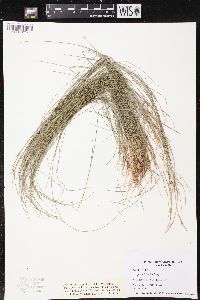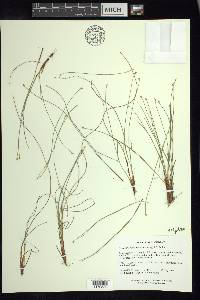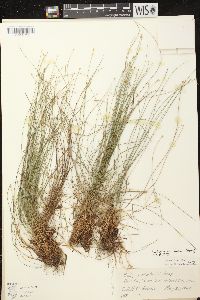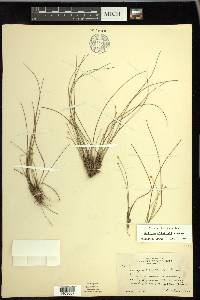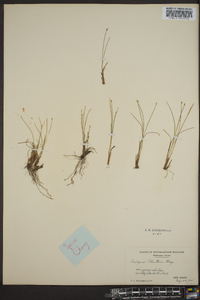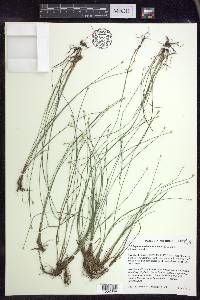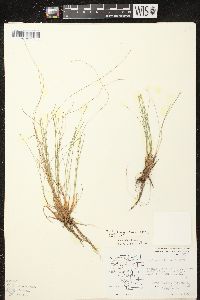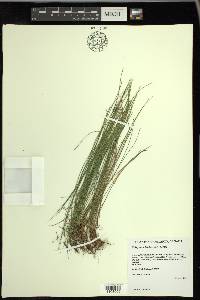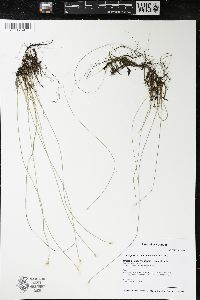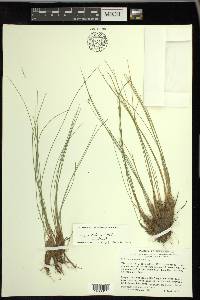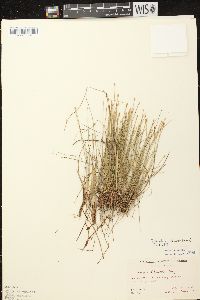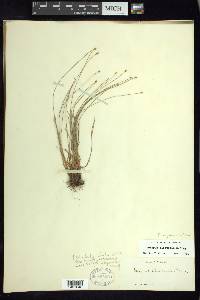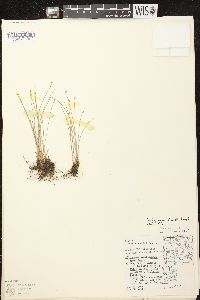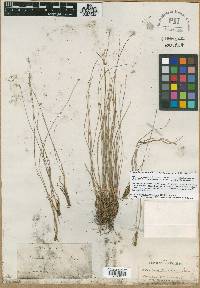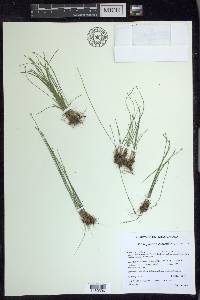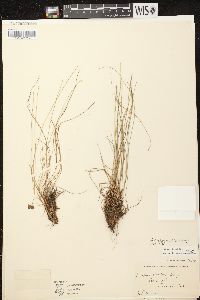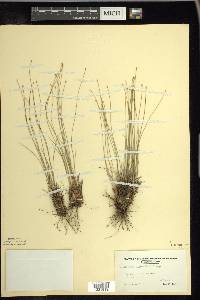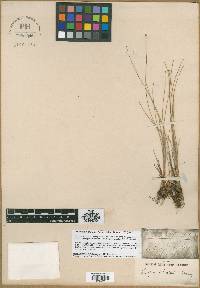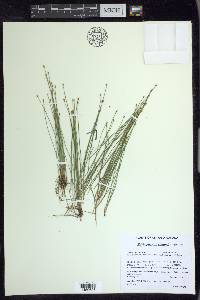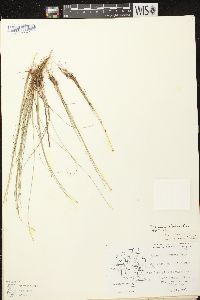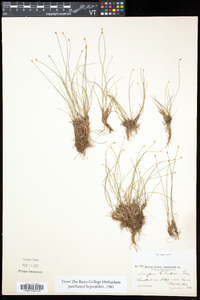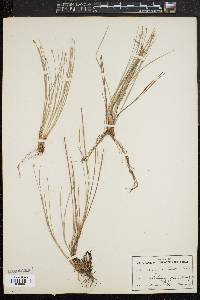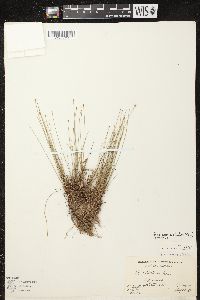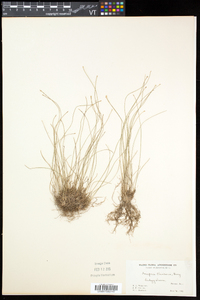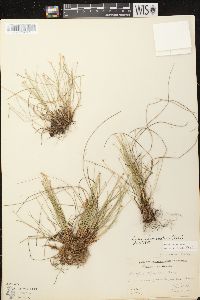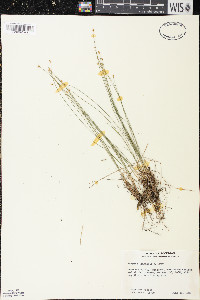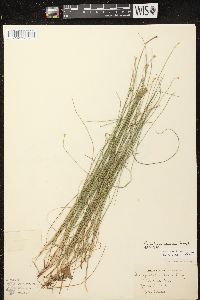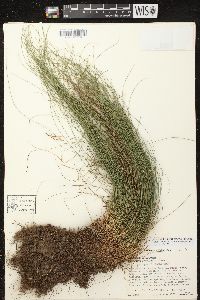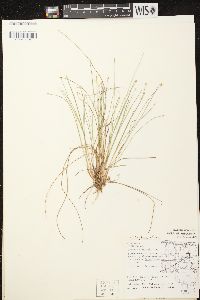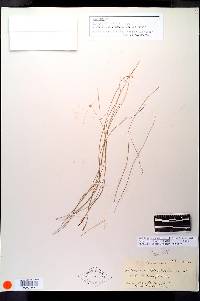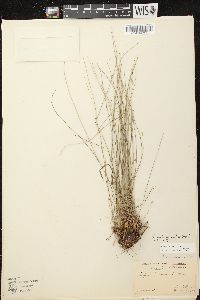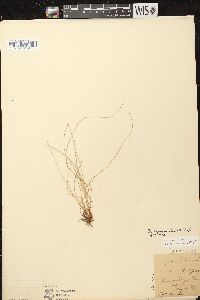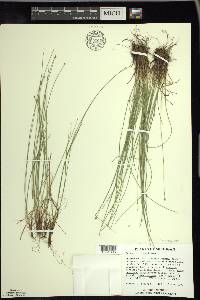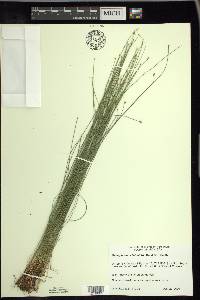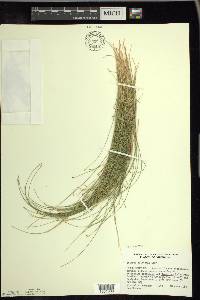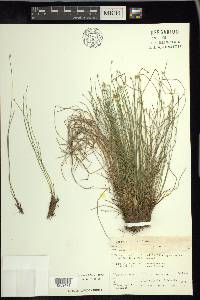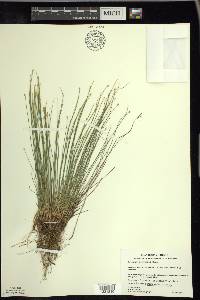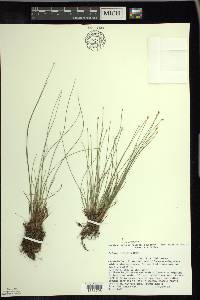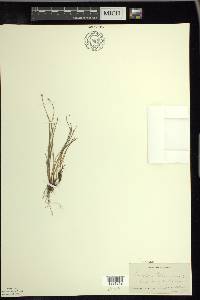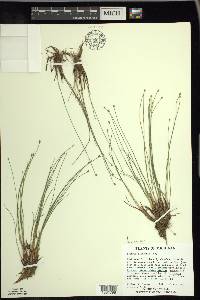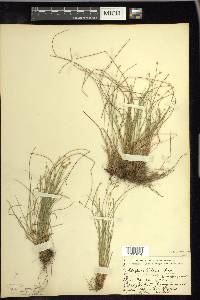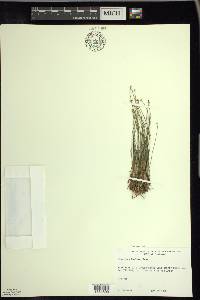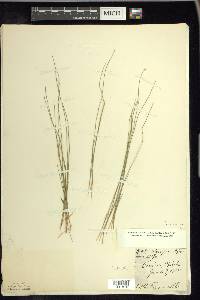Trichophorum clintonii
|
|
|
|
Family: Cyperaceae
Clinton's Leafless-Bulrush
[Scirpus clintonii A. Gray, moreScirpus planifolius var. brevifolius] |
Plants densely cespitose; rhizomes absent. Culms trigonous, 7.5-36 cm, scabrous proximal to inflorescence. Leaves: basal sheaths orange to dark brown; distal leaf sheaths truncate to concave at mouth; blades (6-)15-250 × 0.5-0.8(-1) mm, equaling or shorter than culms at flowering, much shorter than culms at fruiting. Inflorescences: spikelets 3-6-flowered, 3.4-5.3 × 1.3-2.5 mm; bracts shorter than to slightly exceeding spikelets, 3-6 mm, apex mucronate or awned, awn to 1.4 mm. Spikelets: scales orange-brown to dark brown, midribs not reaching apices in distal scales, apex obtuse. Flowers: perianth bristles 3-6, pale brown, terete, equaling or shorter than achenes, scabrous; anthers 0.7-1.5 mm. Achenes compressed trigonous, 1.5-2 × 1-1.2 mm. Fruiting late summer (May-Jul). Open, dry to mesic prairies, meadows, riverbanks, rock outcrops, on lime-rich substrates; 10-900 m; Alta., N.B., Ont., Que., Sask.; Maine, Mich., Minn., N.Y., Wis. Perennial herb, densely tufted 7 - 36 cm tall Leaves: more or less basal. Basal sheaths orange to brown, upper leaf sheaths sometimes concave at the mouth. Blades 1.5 - 25 cm long, 0.5 - 1 mm wide, equal to or shorter than culms at flowering (much shorter at fruiting), linear, keeled beneath. Inflorescence: a solitary, terminal spikelet, subtended by a scale-like bract. Bract upright, 3 - 6 mm long, egg-shaped, prolonged into stout point. Flowers: minute, subtended by a floral scale, lacking sepals and petals, bearing three to six bristles. Bristles straight, light brown, equal to or longer than achene, circular in cross-section, rough. Stamens three, exserted. Anthers to about 1 mm long. Pistil one. Style linear, three-cleft, base persistent. Fruit: a one-seeded achene, light brown, 1.5 - 2 mm long, about 1 mm wide, reverse egg-shaped with a blunt apex, compressed three-sided. Culm: thin, upright, 7 - 36 cm long, three-sided, solid. Spikelets: solitary, 3.5 - 5.5 mm long, 1 - 2.5 mm wide, egg-shaped, three- to seven-flowered. Floral scales spirally arranged, orangish brown to brown with a greenish midrib that often falls short of the apex, egg-shaped with a blunt or pointed apex. Similar species: No information at this time. Habitat and ecology: Rare in the Chicago Region, and known only from Walworth County, Wisconsin. There it was found growing on a wooded bank near a lake. Occurence in the Chicago region: native Etymology: Trichophorum comes from the words trichos, meaning hair, and probably phoros, meaning bearing. Clintonii is named after George William Clinton (1807-1885), the person who discovered this species. Author: The Morton Arboretum Cespitose perennial from short rhizomes; stems slender, erect, scabrous on the 3 angles; lower sheaths bladeless or nearly so, the uppermost usually with a blade shorter than the culm and to 1 mm wide; spikelet 1, terminal, ovoid, 4-5 mm, 4-7-fld; bract erect, ovate, prolonged into a stout mucro much shorter than the spike; scales ovate, acute or obtuse, the green midvein often not reaching the tip; anthers ca 1 mm; bristles 3-6, equaling or shortly surpassing the achene; achene pale brown, trigonous, obovoid, 1.4-2 mm, obtuse. Dry woods; Que. and N.B. to N.Y. and Minn. Fr May-July. (Trichophorum c.) Gleason, Henry A. & Cronquist, Arthur J. 1991. Manual of vascular plants of northeastern United States and adjacent Canada. lxxv + 910 pp. ©The New York Botanical Garden. All rights reserved. Used by permission. |

